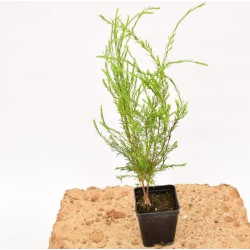copy of Navel Orangee Tree
Generalities:
Navel Orange is a table orange with an intense orange pulp. The flowering of the Washington Navel Orange is abundant in spring and the contrast of the white of the flowers with the dark green of the foliage is very beautiful. The shape of the fruit is round with a slight flattening on the poles; the wedges have a fine grain rich in juice and with an acidity / sugar degree ratio in favor of sweetness. The ripening period runs from mid-December to May.
- Height 150 / 160cm
Generalities:
The Navel Orange is a large table orange with an intense orange color.The flowering of the Washington Navel Orange is abundant in spring and the contrast of the white of the flowers with the dark green of the foliage is very beautiful. from which it takes its name (navel in English) and to which corresponds a twin fruit that develops inside the main fruit. It is seedless (ie seedless), good-looking and with a strong orange skin that is callused and thick. When fully ripe, it gives exquisite jams.
Cultivation and Care:
The orange tree is a plant that loves temperate-warm climates and not excessively rainy in the autumn and winter seasons. The ideal temperature range is the one that goes from about 13 to 30 ° C and is very afraid of temperatures that drop below 3 ° C. Long lasting strong winds can cause various damage to plants because they can cause the drying of leaves and young shoots as well as the breaking of the thinnest branches. As in the case of all citrus fruits, even orange plants have as their ideal soil a loose or medium-textured soil, well draining, deep, fertile and properly fertilized. The ideal soil pH should range between 6.5 and 7.5. Clayey soils, calcareous ones and those characterized by a high alkalinity do not lend themselves to the cultivation of orange. The planting of the plant should be carried out in the spring period, between the end of March and that of May (depending on the area), when the risk of harmful late frosts is now averted. Pruning of orange trees can take place a couple of times a year; once in summer (late June-early July) and once in winter, during vegetative rest. We will proceed by lightening the foliage of the plant by eliminating the broken branches, the dry ones, those that have already bloomed and those bent downwards. It is important to remember to always remove the so-called suckers if they come from the base of the largest branches; if, on the other hand, they are located in the peripheral area of the canopy, simply tick them off. The pruning of the orange (and this also applies in principle to other types of citrus fruits) must not be too drastic, to ensure that a correct balance is maintained between the production of the fruit and the vegetation. More aggressive pruning is carried out only in the case of parasitic attacks or if the plant has become excessively tall. In the autumn and winter, orange plants do not have particular needs for irrigation; things change in the hottest periods when it is necessary to proceed with regular watering (but never exceeding). The oranges are harvested at different times depending on the variety; in any case, it is concentrated in the period from mid-October to the end of May. It is advisable to harvest on a non-rainy day and late in the morning. In order not to damage the oranges, it is advisable to remove them from the twigs using special scissors. Once harvested, the oranges should be dried and placed in wooden or plastic crates which will be stored in a cool and dry place. After harvesting, the orange plant will be fertilized using an organic-mineral fertilizer. A final nod to adversity; those that can affect orange plants are different; we remember the black aphid and the green aphid, the wonder mite, the rusty mite, the green bug, various types of cochineal, the fetola, the white fly, the citrus cotonello, the red spider, the thrips etc.


















